(May 8, 2024) “Harold D’Souza and Darcy D’Souza are inspirations to me, and their story inspired me to create a feature documentary film titled ‘To Be Free,’ which focuses on labour trafficking in the United States,” shared American director Benjamin Ryan Nathan in his message at the Eyes Open International (EOI) Conference organised by Harold D’Souza last week.
The feature documentary is being produced by the American actor and producer Martin Sheen who has received numerous accolades, including three Emmy Awards, a Golden Globe Award, and four Screen Actors Guild Awards in a career spanning 30 years. “Are you aware that slavery is still thriving in our midst? The answer to that question inspired me to become an executive producer of the feature documentary film called ‘To Be Free‘ that exposes the practice of human labour trafficking here in the United States and around the world,” he remarked in his video message that was played at the conference.
“This was our first Eyes Open International Conference. It was my dream project, a mission impossible made possible with the help of EOI Board Directors, the National Underground Railroad Freedom Centre, and well-wishers,” Harold D’Souza, pleased with the success of the conference, shared with Global Indian.
He formed his non-profit Eyes Open International to enlighten community members, victims, survivors, law enforcement agencies, faith leaders, nonprofit organisations, healthcare professionals, police officials, first responders, academics, students, teachers, and professors to identify red flags, problems, solutions, and resources involved in human trafficking. The EOI conference served as an extension of this goal. The EOI board boasts of people from both USA and India including Prince Manvendra Singh Gohil.
The global rendezvous
Apart from the thousands who viewed the EOI conference (Triumph over Trafficking) live virtually from India, Canada, Pakistan, Nepal, and the U.K., 300 people attended it in person,” shared Harold, adding, “Those who travelled from India to attend the conference included Deepak Acharya, EOI Board Director and CEO of INOX India Ltd.”
Linda Dixon from the Department of Defense USA, Dr Yvan Demosthenes, CEO of HamiltonDemo, Dr Kalyani Gopal, founder of SAFECHR, Linda Majeska Powers, Legal Director of the Ohio Attorney General, Hon Woodrow Keown, President and CEO of the National Underground Railroad Freedom Center, and Hriday Raval, International Director of Eyes Open International, were the speakers at the conference.
View this post on Instagram
“The audience felt that it was a life-changing experience for them simply by seeing the first brown survivor family, on stage. For the first time in our two-decade journey, all four of us—my wife, Darcy, and my sons, Rohan and Bradley—were together to share our journey from struggle to success,” Harold remarked. He strongly believes that “survivors are thrivers.”
Expressing gratitude to the EOI Board Directors, the National Underground Railroad Freedom Center, and the entire community from Ohio, America, and India for the successful EOI conference, Harold D’Souza added, ‘The support from Rohan, Bradly, and Darcy was the pillar of this mega success.”
Flashback – From Victim to White House Consultant
In 2003, Mangalore’s Harold D’Souza relocated to the United States with his family, only to realise that they had inadvertently fallen victim to human trafficking, eventually finding themselves ensnared in debt bondage.
“I stepped down from a senior management position in India to pursue the American dream,” remarked Harold. “I came to the United States following the advice and encouragement of a man who would become my trafficker,” he said, talking about his ordeal. “He manipulated, tricked and trapped us.” As a part of the deceitful scheme, Harold was promised of an H-1B visa, and a job as a business development manager with a salary of $75,000 along with other perks.
“In 2003, it was a big amount and thinking of the future of my two sons, I decided to take up the offer leaving behind the stable job in India,” he shared. His boys were seven and four-years-old at that time.
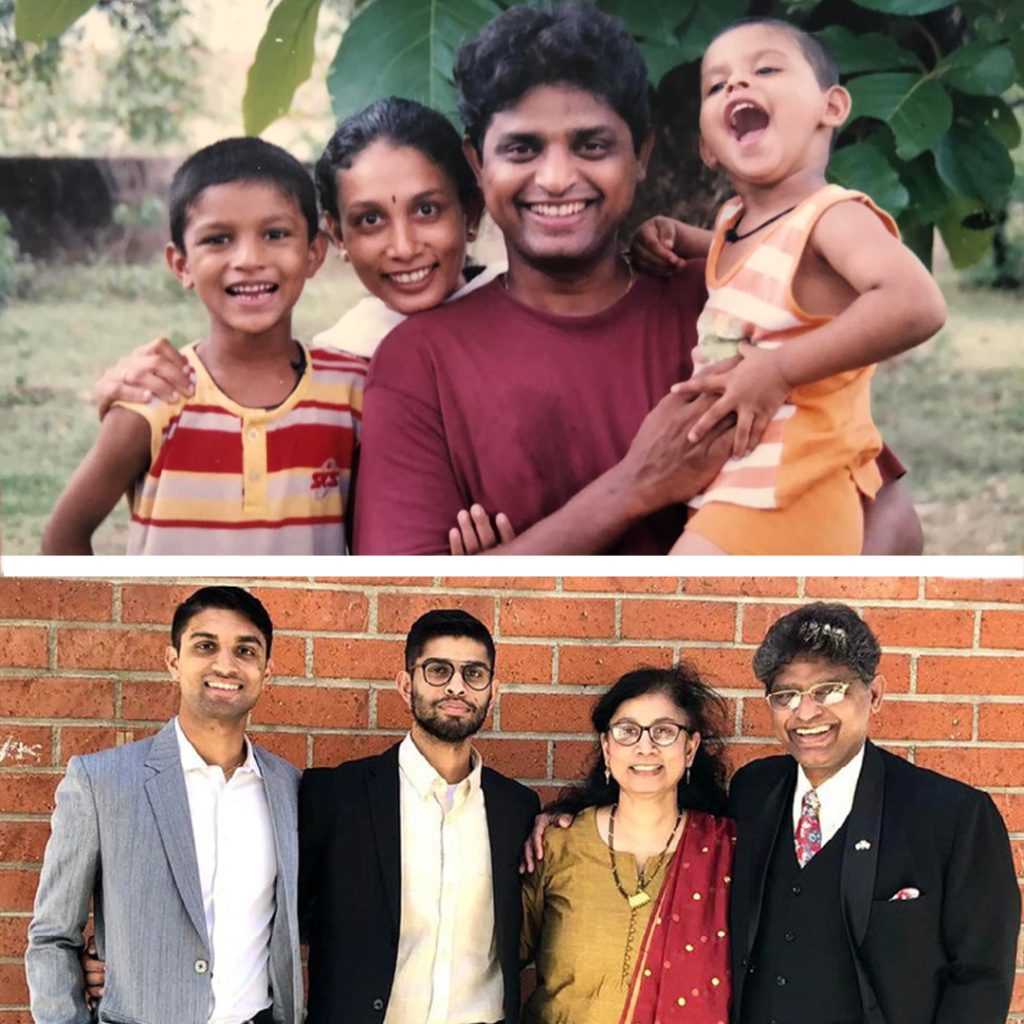
Harold, Darcy, Rohan and Bradly – Then and now
The family sold off their car and other belongings to cover travel costs. “I thought I would soon recover the amount after I start earning dollars,” he told. “I had no understanding of what HIB Visa, or the H4 dependant visa on which my wife and two sons came on. I didn’t know the dos and don’ts; I didn’t know how this country operated. I didn’t know the law. I didn’t know the people. I just jumped,” he remarked.
Upon Harold’s arrival in the US, his trafficker confiscated the documents and $1000 in cash that he carried on the pretence of safekeeping. From that moment, their ordeal began. Both he and his wife were compelled to work seven days a week, enduring shifts lasting 14 to 16 hours in a restaurant, with accommodation provided next door.
“In most trafficking cases, victims are provided lodging in proximity, ensuring their constant availability for work while limiting their interaction with the outside world. This isolation prevents them from easily reaching out for assistance or lodging complaints, as they remain within the immediate control of their perpetrators.” And Harold explains that all through, abusive language and threats continue.
The trafficker imposed exorbitant fees for food, clothing, and shelter, and withheld Harold and Darcy’s salaries to cover these expenses. Additionally, Harold was deceived into signing a loan from a bank, which the trafficker pocketed, plunging him into debt bondage.
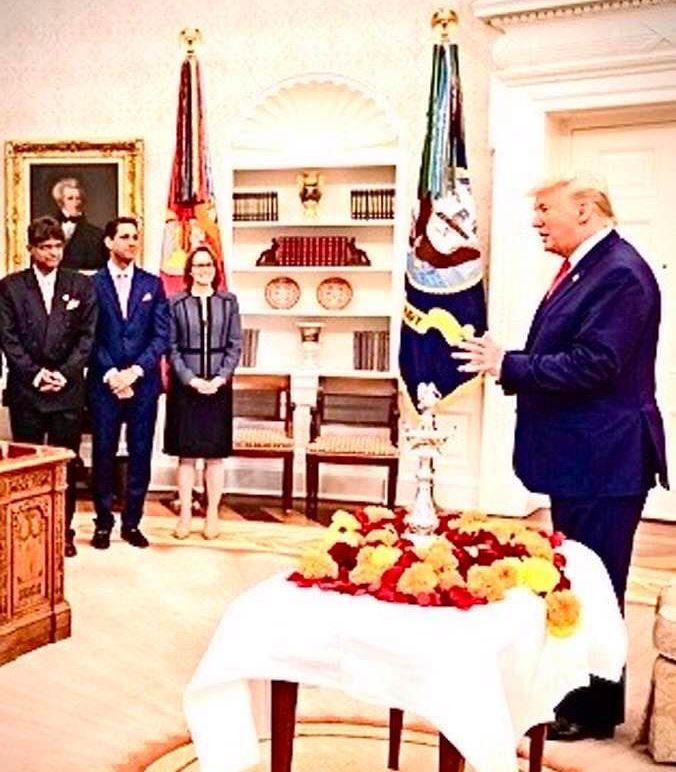
Harold D’Souza with former USA president Donald Trump at the White House
After enduring years of ordeal, Harold finally liberated himself by mustering the courage to seek help and working his way out of the situation, displaying immense bravery.
Looking at his story of resilience and resolve, he was appointed to the US Advisory Council on Human Trafficking initially by President Barack Obama and later by President Donald Trump. His tenure at the White House, from 2015 to 2020, restored the self-confidence that Harold had lost during the ordeal of being treated as an undocumented immigrant, despite entering America on an H-1B visa. “At the White House I was not looked at as a survivor, rather as an expert, and that transformed my life,” he remarked.
Purpose – to prevent human trafficking through Eyes Open International
“When people in my team at the White House heard my story, they encouraged me to start a non-profit to help victims.” This inspired Harold to establish Eyes Open International, dedicated to aiding victims of human trafficking and debt bondage. Driven by his own traumatic experiences and his resolve to alter the plight of trafficked individuals, he additionally fulfils the role of an expert consultant at the Department of State’s Office to Monitor and Combat Trafficking in Persons. He actively participates in the Governor’s Ohio Human Trafficking Task Force and serves on the board of directors for numerous NGOs worldwide.
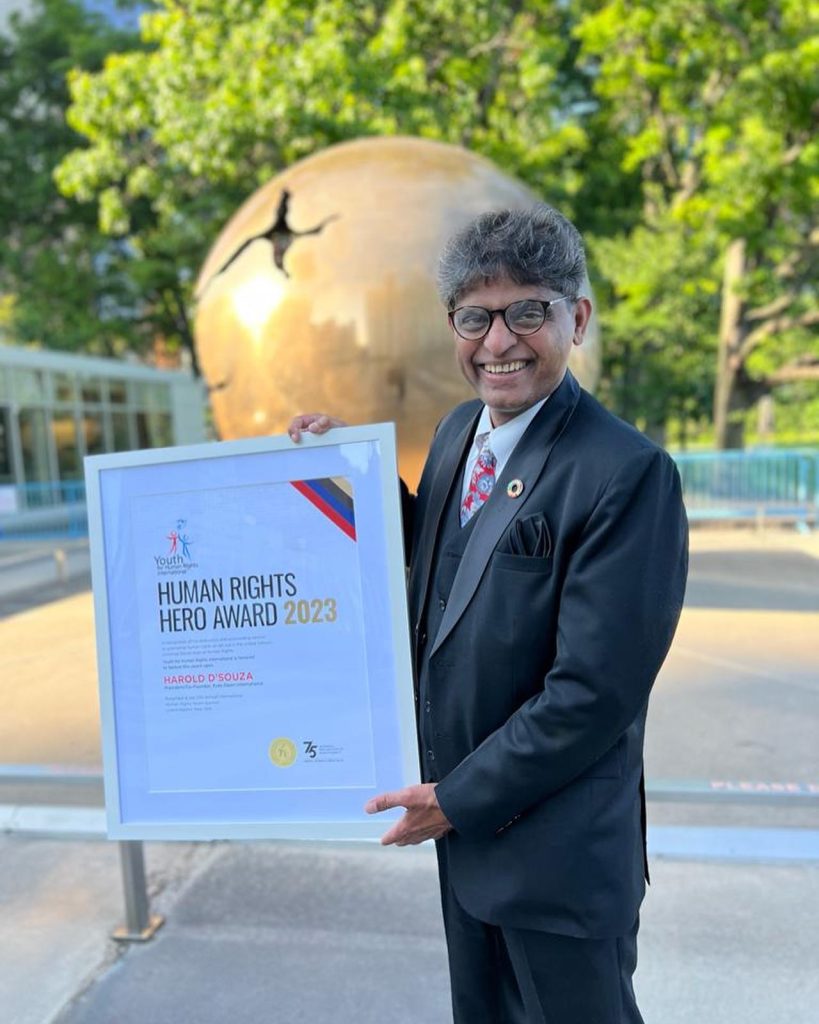
Harold-D’Souza after receiving the Hero Award
The Indian American labour trafficking and debt bondage survivor received the Human Rights Hero Award 2023 at the United Nations headquarters in New York for being the leading activist in United States’ efforts to address the problem. “A feature film on my story with a well-known movie star in India is in the discussion phase,” he signed off.
- Follow Harold D’Souza on LinkedIn, Facebook, Twitter, Instagram and YouTube
- To know more about Eyes Open International and its initiatives, visit its website


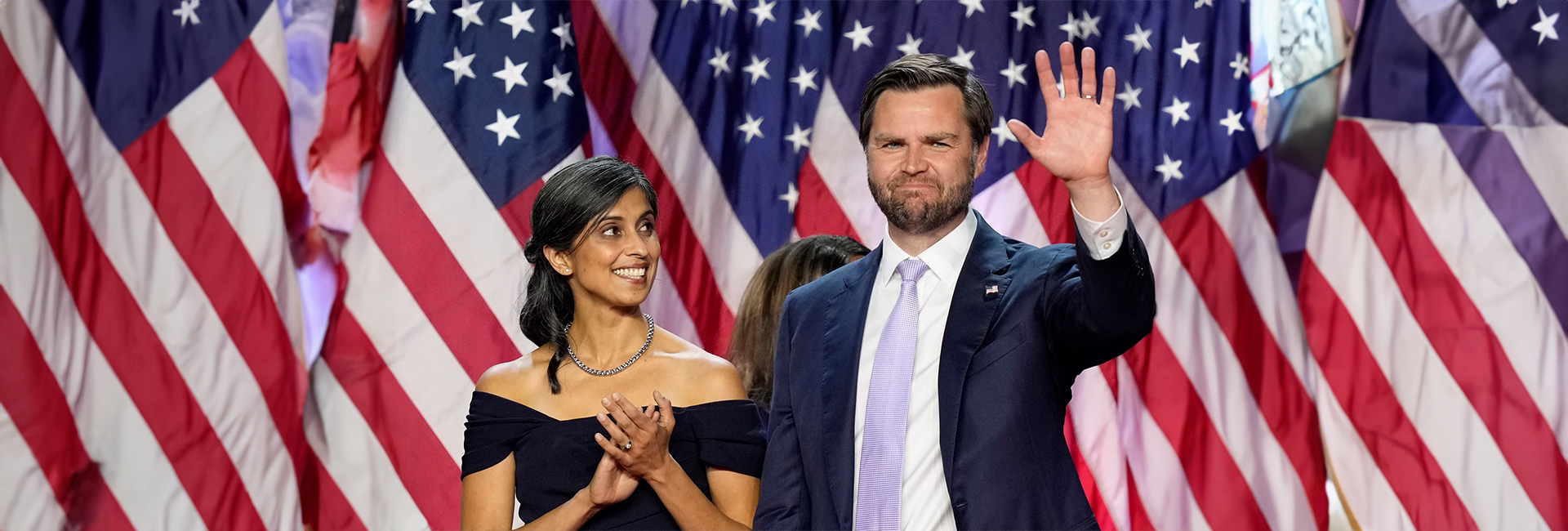
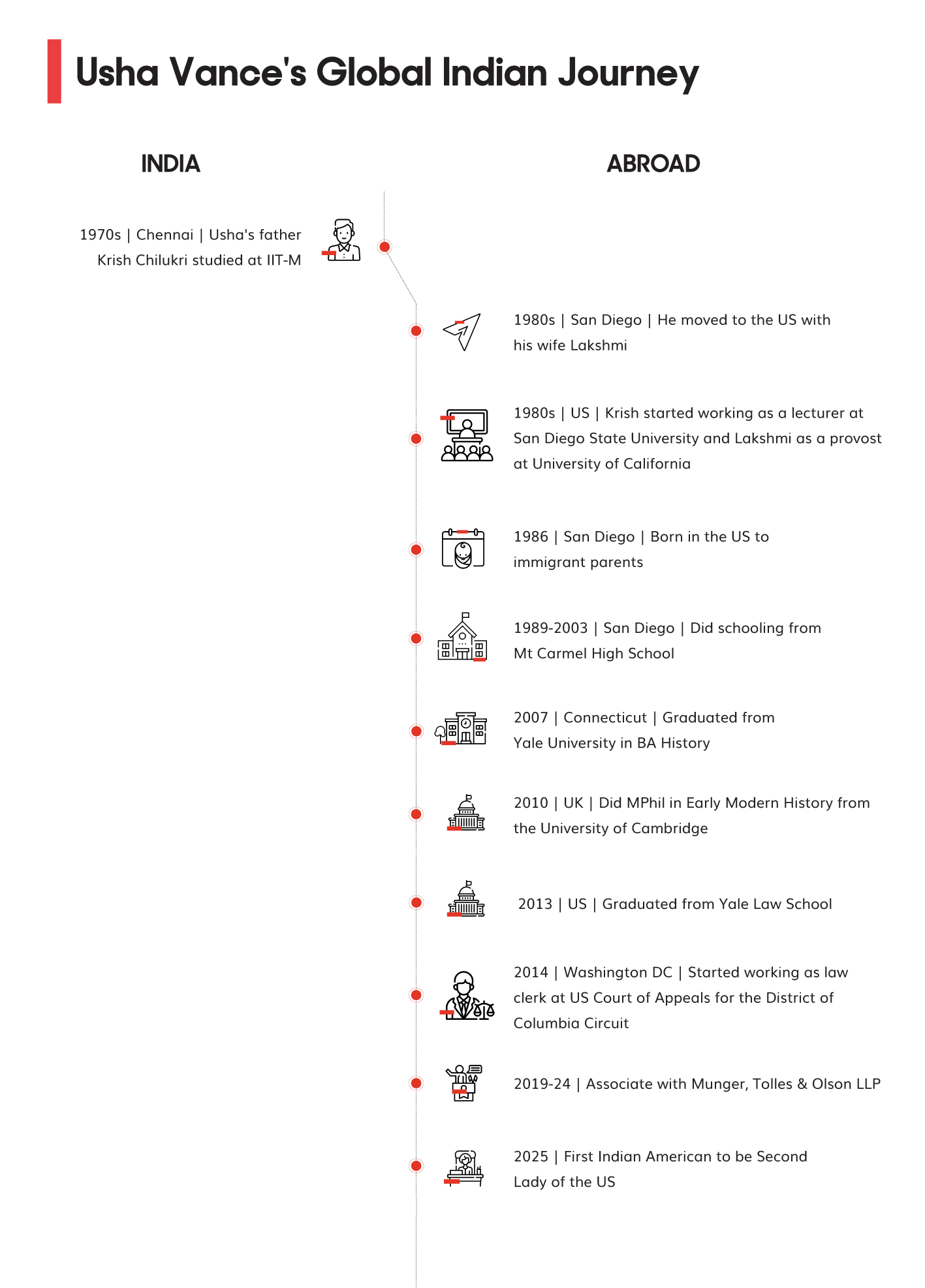
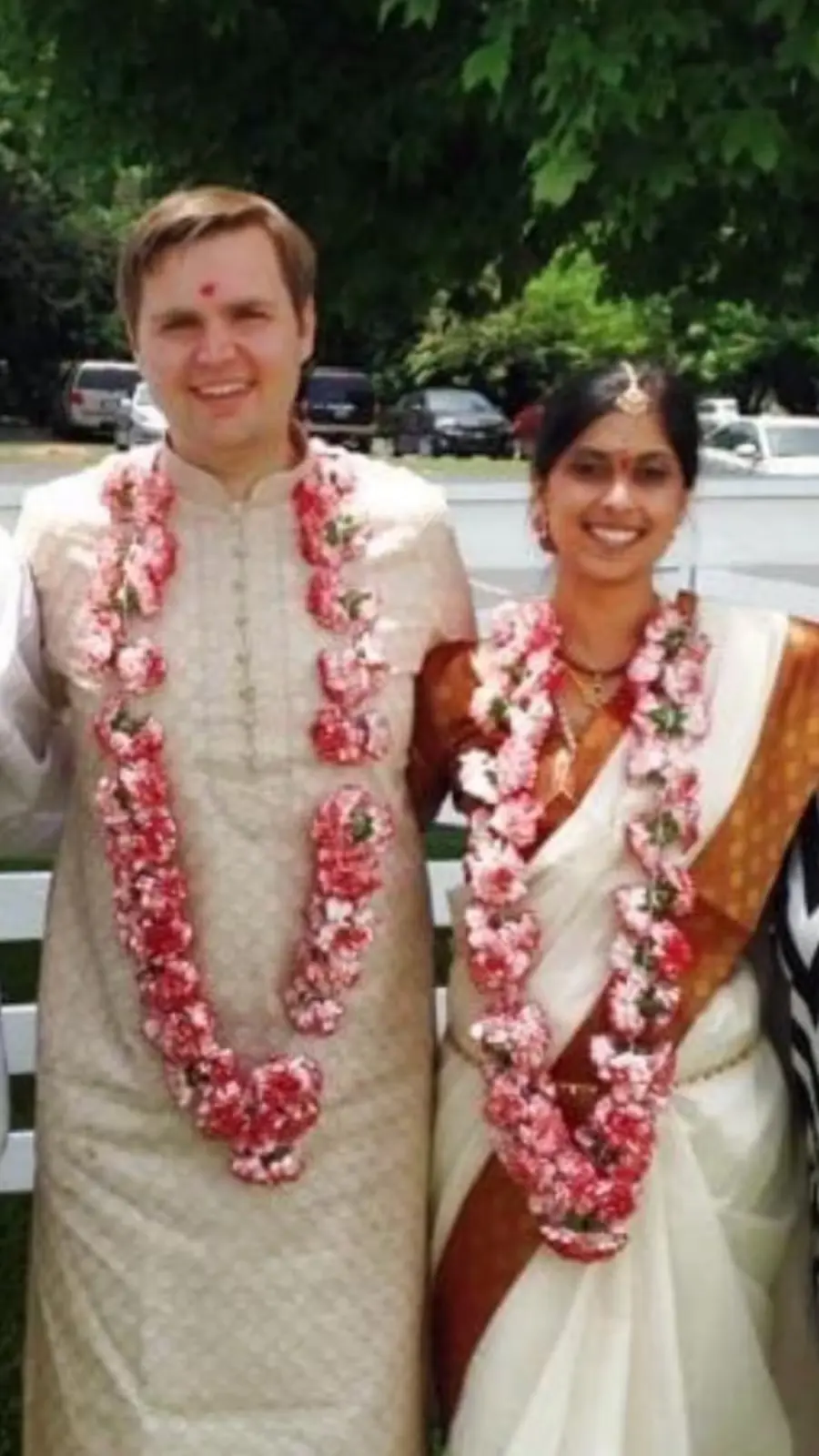 JD Vance and Usha Vance[/caption]
JD Vance and Usha Vance[/caption]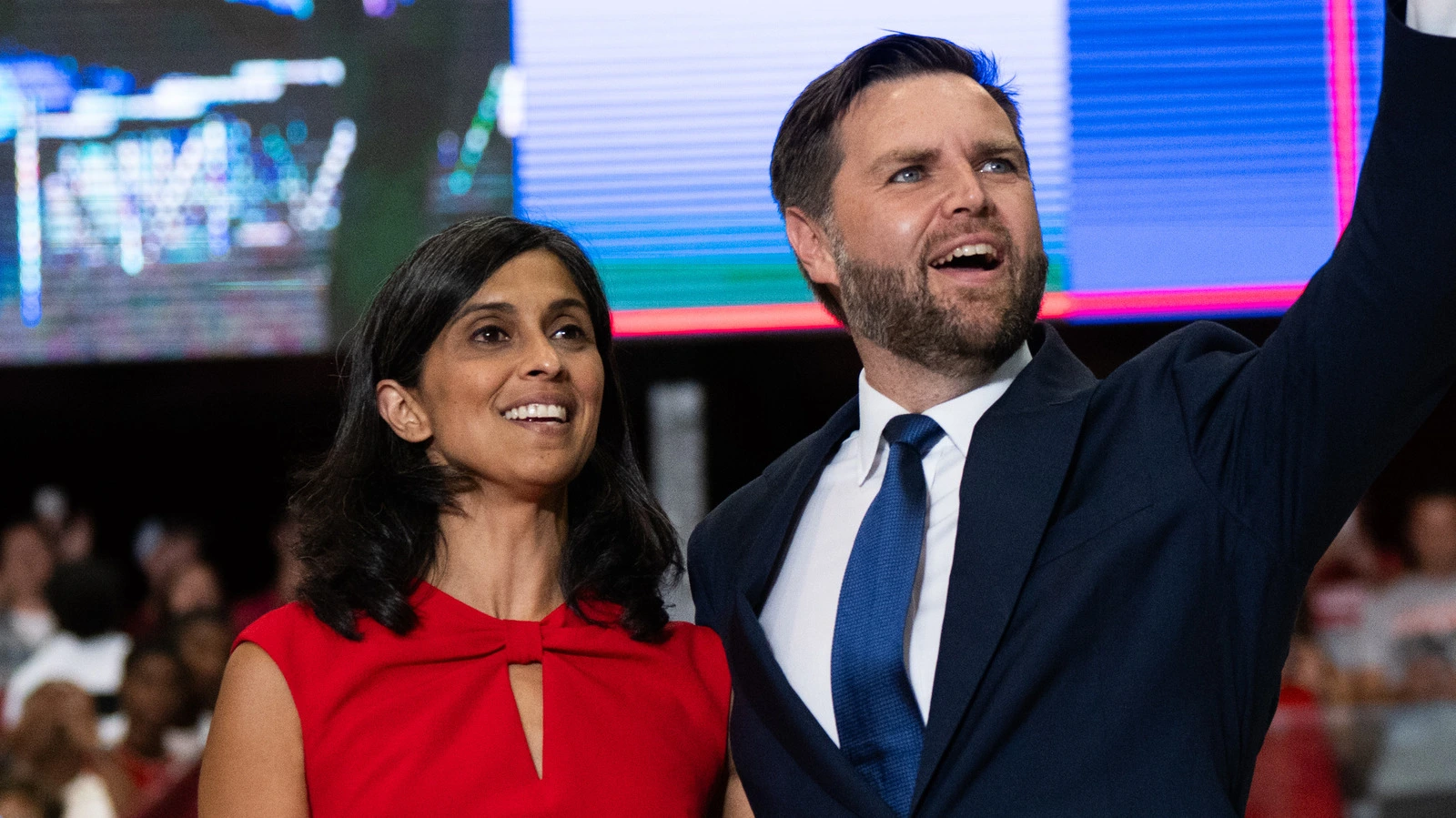
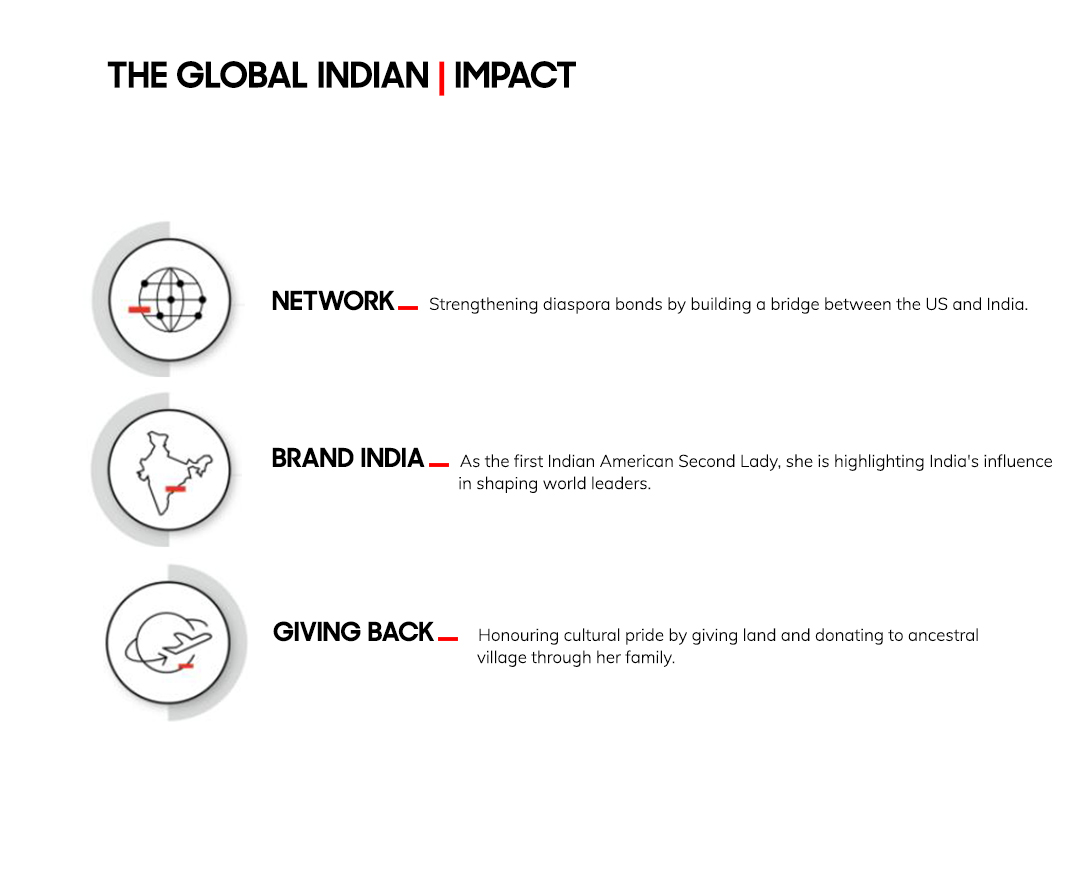

 Jalebi Painting by artist TK Sarasvathy.[/caption]
Jalebi Painting by artist TK Sarasvathy.[/caption]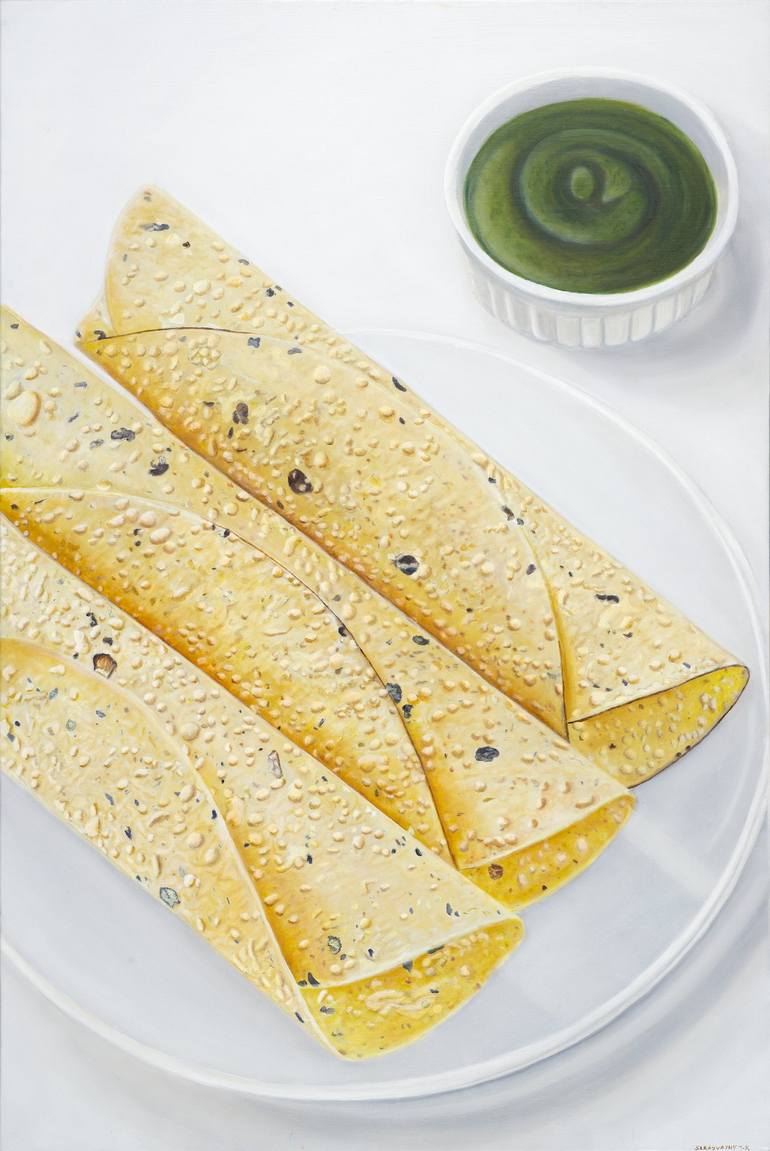 Papad painting by Artist TK Sarasvathy.[/caption]
Papad painting by Artist TK Sarasvathy.[/caption]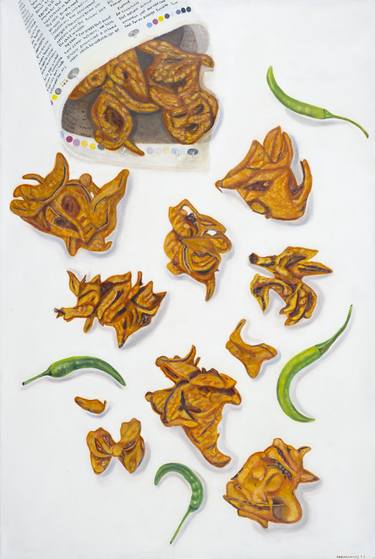

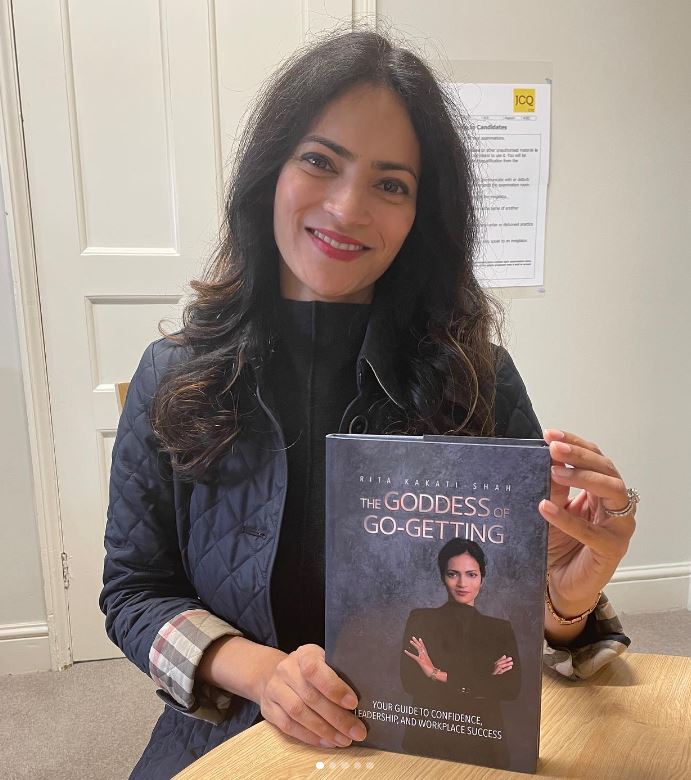 Rita Kakati-Shah with her book[/caption]
Rita Kakati-Shah with her book[/caption]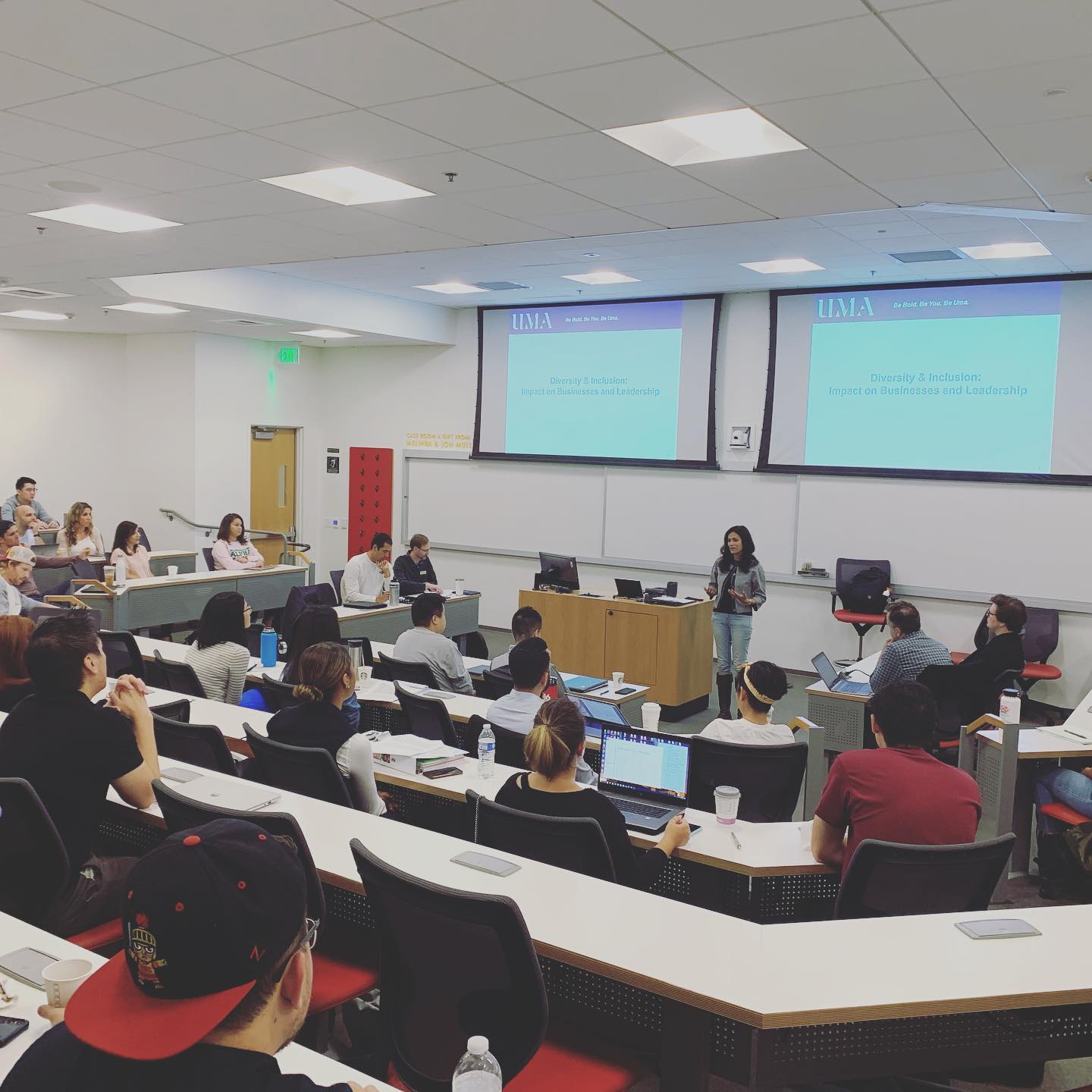 Rita Kakati-Shah addressing students at the USC Marshall School of Business[/caption]
Rita Kakati-Shah addressing students at the USC Marshall School of Business[/caption]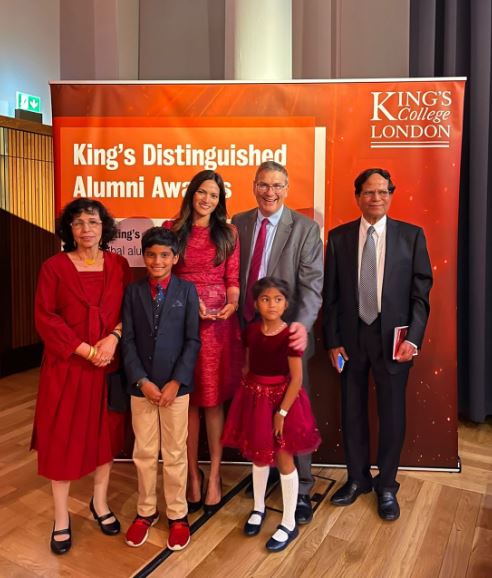 Rita Kakati-Shah with her family at King's Distinguished Alumni Awards ceremony[/caption]
Rita Kakati-Shah with her family at King's Distinguished Alumni Awards ceremony[/caption]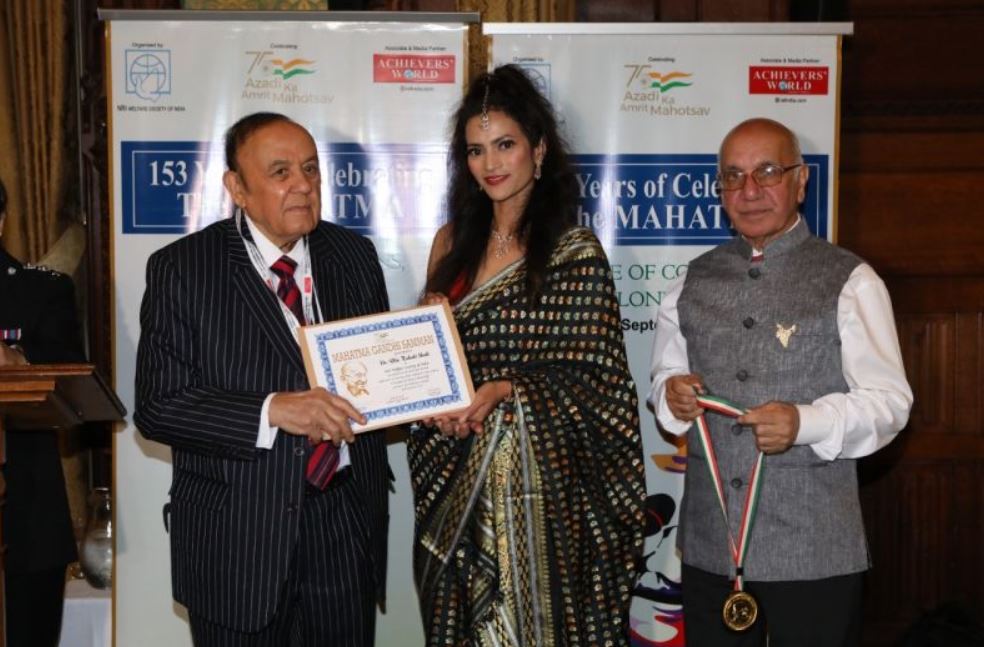 Rita Kakati-Shah receiving Mahatma Gandhi Samman medal at the Palace of Westminster, House of Parliament in London[/caption]
Rita Kakati-Shah receiving Mahatma Gandhi Samman medal at the Palace of Westminster, House of Parliament in London[/caption]
 Lak Ananth[/caption]
Lak Ananth[/caption]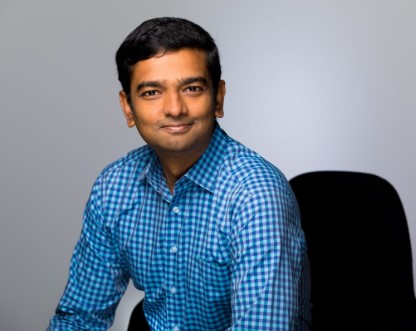
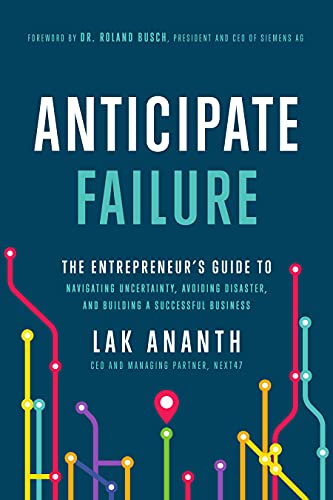 Cover image of Lak Ananth's book[/caption]
Cover image of Lak Ananth's book[/caption]
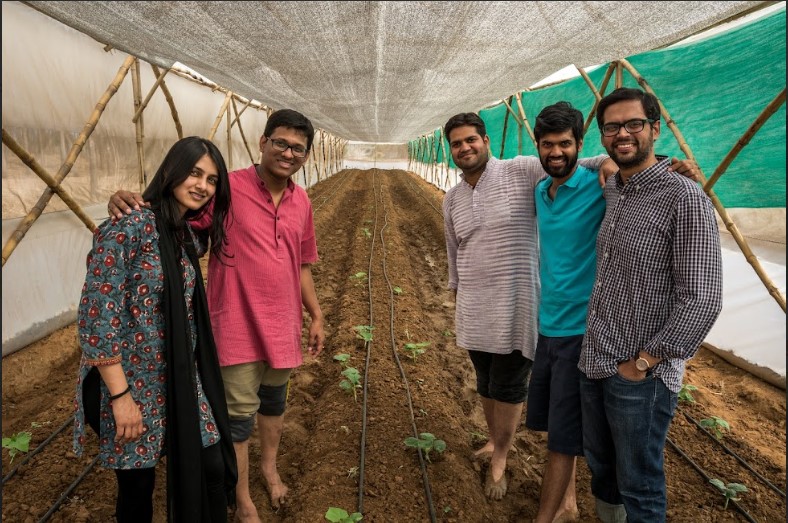 Team Kheyti[/caption]
Team Kheyti[/caption]
डर के आगे जीत है।